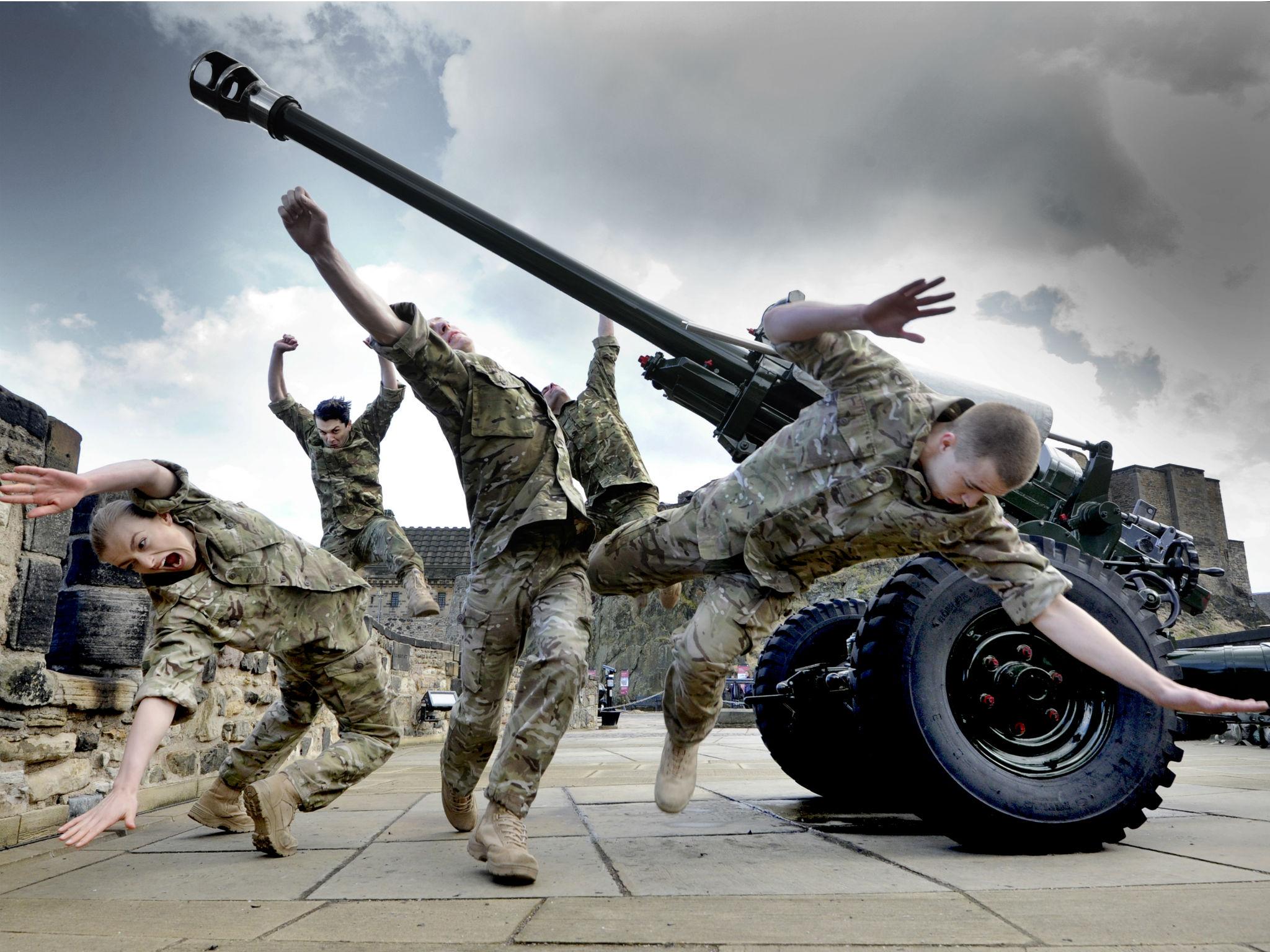5 Soldiers, Yeomanry House, London, review: Rosie Kay makes the experience of injury feel viscerally real
This exploration of modern war as a physical experience is presented in association with the British Army and performed in drill halls and barracks across the country for the UK tour

For dancers as well as soldiers, injury is a risk of the job. At this performance, Rosie Kay’s 5 Soldiers became four, without compromising the work’s heart-pounding movement or its subtle web of relationships. Subtitled “the body is the frontline”, it’s a forceful reminder of how powerful these bodies are, and how fragile.
First created in 2010, 5 Soldiers is an extraordinary exploration of modern war as a physical experience. We watch Kay’s soldiers as they drill, go off duty, go into combat and cope with the aftermath. The wider war is hinted in a crackle of broadcast news, but the stripped-down production focuses on these soldiers, these bodies.
Kay starts with literal experience. She drilled with soldiers and visited rehabilitation centres as she prepared for the work. This UK tour is presented in association with the British Army, performed in drill halls and barracks across the country. There’s a documentary precision to scenes where the soldiers wait for action, bored or driven to action, and an explosive authenticity to the drill scenes. There are no macho heroics here, only clear-eyed observation of acts and consequences.
The dancers flog themselves through the military moves, then peel away into more personal solos, into fears and fantasies. The one woman is determined to be as tough as her male colleagues, to need no help. One man spins through a waltz with an imagined partner, until his ballroom hold morphs into holding a rifle. In down time, rivalries and sexual tensions emerge, only to be tamped down in time for combat.
The unit wait around a square of light, ready for a parachute jump that becomes a skydiving dance, a moment of floating freedom before they hit the ground. The discipline and fear of the action scenes is built from how hard those bodies have to work: crouching, turning, working over the ground again and again.
The most powerful scenes in 5 Soldiers concern injury and rehabilitation. One soldier is sent flailing and turning by an explosion, his comrades scrambling to help. Again, Kay makes the experience of injury feel viscerally real. Duncan Anderson’s legs are strapped up to represent amputation, leaving him struggling to walk on his kneecaps. His recovery is a fight with his own body: his falls, his shaky balance. He forces himself against gravity and exhaustion as he finds new ways, not just of moving, but of reclaiming his identity as a soldier.
Join our commenting forum
Join thought-provoking conversations, follow other Independent readers and see their replies
Comments